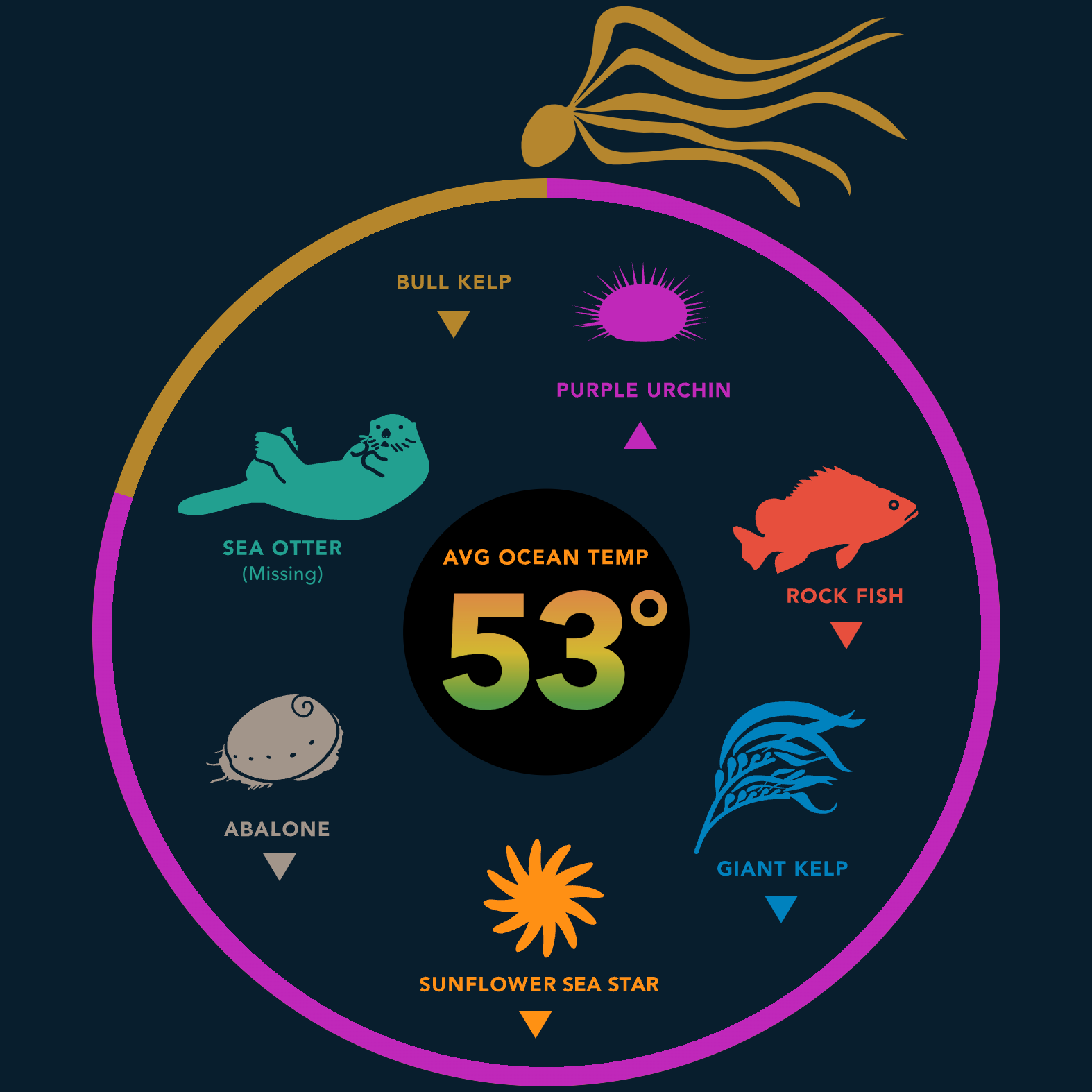In 1911 and 1912 a survey of the kelp beds along the coastal waters of the West Coast of the United States and Alaska was performed by the US Department of Agriculture. At the time, there were thoughts that the potassium content of kelp could make it a source of potash (used in explosives and imported exclusively from Germany) and jumpstart the nascent fertilizer industry. The kelp beds were surveyed from small dories put out by larger steam powered craft working their way from Southern California through Northern California, Oregon, Washington’s outer coast, Puget Sound and then, skipping Canada, they continued along the coast of Alaska, concluding in the areas around Kodiak Island. Each contiguous kelp bed was numbered and identified as either M (Macrocyists, or giant kelp), N (Nereocystis, or bull kelp) or M&N (a combination of both).
Where Does Bull Kelp Live?
Bull kelp can be found growing in a narrow band of the Pacific Ocean just off the coast of North America from Central California to the Aleutian Islands, Alaska.
Each region—each individual kelp grove—experiences specific conditions. We can compare and contrast bull kelp resilience and health across these regions.

The Kelp Forest Index
The species, or characters, in this kelp forest index, combined with ocean temperature and physical geography, create the dynamics that determine the health of the kelp forest in each region.
View Kelp Index Simulator >





